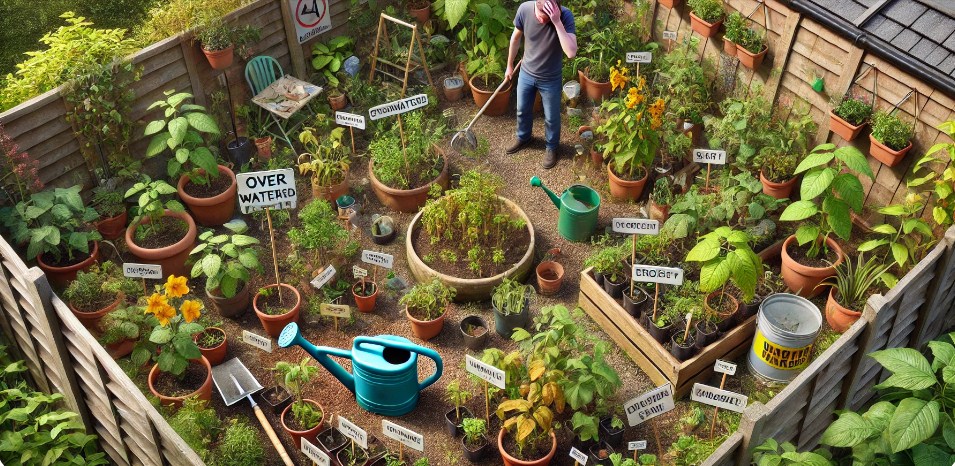Starting a garden is a beautiful and fulfilling journey, but it can also be filled with confusion, especially for beginners. It’s easy to feel overwhelmed by all the advice, terms, and plant varieties. While trial and error are part of the learning process, knowing some common gardening mistakes ahead of time can save you time, money, and disappointment.
In this article, we’ll walk you through the top 10 mistakes new gardeners often make — and more importantly, how to avoid them.
1. Choosing the Wrong Plants for Your Climate
One of the most common pitfalls for beginners is planting species that aren’t suited to their climate. Every plant has a preferred environment when it comes to temperature, sunlight, and humidity.
How to avoid:
-
Research your hardiness zone. Use USDA or local gardening zone maps to identify plants that thrive where you live.
-
Buy locally: Nurseries in your area typically stock plants suitable for your climate.
-
Start with native plants that are naturally adapted to your region.
2. Overwatering or Underwatering
Watering may seem like a simple task, but many new gardeners struggle to get it right. Too much or too little water can quickly lead to unhealthy or dead plants.
How to avoid:
-
Learn the specific watering needs of each plant.
-
Stick your finger into the soil before watering. If it feels moist an inch deep, wait a day or two.
-
Morning watering is ideal—it gives plants time to dry off and reduces fungal growth.
3. Ignoring Soil Quality
Beginners often focus only on plants and containers, forgetting that healthy soil is essential for growth. Poor soil leads to poor results, no matter how much sun or water your plants get.
How to avoid:
-
Invest in high-quality potting mix for containers.
-
For garden beds, mix compost into your soil before planting.
-
Test your soil’s pH and adjust as needed.
4. Planting Too Much, Too Soon
It’s exciting to start a garden, and many beginners go overboard by planting too many seeds or varieties at once. This leads to overcrowded plants and difficult maintenance.
How to avoid:
-
Start small. Choose just a few easy plants to begin with.
-
Leave adequate space between plants as directed on seed packets or labels.
-
Focus on learning before scaling up.
5. Not Paying Attention to Sunlight
Many plants require a certain number of hours of direct sunlight per day. Ignoring this can leave your plants struggling to grow or even dying off.
How to avoid:
-
Observe how much sun your garden area receives throughout the day.
-
Choose plants based on the actual light your space offers: full sun, partial shade, or full shade.
-
Use apps or a notebook to track light patterns over time.
6. Ignoring Pest and Disease Signs
It’s easy to miss early signs of pest infestations or diseases, especially if you’re not sure what to look for. By the time you notice a problem, it may be too late.
How to avoid:
-
Inspect your plants regularly, especially under leaves.
-
Learn to identify common pests like aphids, spider mites, and snails.
-
Use natural remedies like neem oil or soap sprays when issues arise.
7. Skipping Fertilizer
Plants need nutrients just like we do. Many beginners assume soil alone is enough, but over time, plants exhaust nutrients and begin to show signs of deficiency.
How to avoid:
-
Use slow-release fertilizers or organic compost every few weeks.
-
Don’t overdo it—too much fertilizer can burn plants.
-
Read labels and follow directions for your specific plant type.
8. Not Labeling Plants
When you’re planting multiple varieties, it’s easy to forget what you planted where. This makes it hard to know how to care for each one or when to harvest.
How to avoid:
-
Use garden markers, popsicle sticks, or labels to identify each plant.
-
Keep a garden journal with notes on planting dates and locations.
-
This helps with troubleshooting and future planning.
9. Neglecting Regular Maintenance
Gardens need attention — not necessarily daily, but certainly on a consistent basis. Neglecting weeding, pruning, or watering can undo weeks of progress.
How to avoid:
-
Set a weekly gardening routine.
-
Check for pests, water levels, and signs of stress.
-
Use timers or reminders on your phone to stay on track.
10. Expecting Instant Results
Gardening is not a fast process. Beginners often give up too soon because they don’t see immediate growth or harvests.
How to avoid:
-
Be patient. Some plants take weeks or months to grow.
-
Celebrate small wins — a new leaf, a flower bud, or a sprout.
-
Treat gardening as a long-term journey, not a race.
Final Thoughts: Growth Takes Time
Mistakes are part of every gardener’s journey, especially when you’re just starting out. The good news is that plants are incredibly forgiving. Even if you make a few errors, there’s always a chance to adjust and try again.
With a bit of knowledge, some patience, and regular care, you’ll avoid these common traps and be on your way to growing a thriving garden that brings joy and beauty to your space.
